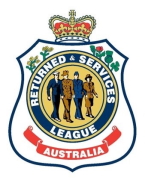ANZAC Day
The History of ANZAC Day
The date of the landing at ANZAC, the 25th day of April was chosen to be the day that would become our national day of commemoration.
Initially, ANZAC Day was a mark of respect for those who served and sacrificed their lives in the Great War for Civilisation, the war as many hoped, to end all wars.
However, because of the vicissitudes of man, the date has become the day on which the nation remembers those who served and those who made the ultimate sacrifice in all the conflicts that Australian has participated up to the present day in the continuing struggle to preserve our freedoms in the attempt to rid the world of tyranny. ANZAC, originally an acronym for the Australian and New Zealand Army Corps, was used by the clerks of General Birdwood’s staff at his headquarters in Shepheard’s Hotel in Cairo, Egypt. The word ANZAC was proposed by a Major CM Wagstaff. It is thought the suggestion came from a Lieutenant AT White of the Royal Army Service Corps. It is recorded in the official history that “it was some time before the code word came into general use, and at the Landing (on 25 April 1915) many men in the divisions had not heard of it”. After the landing, General Birdwood gained permission to use the name for the area occupied by the Australian and New Zealand Forces.
At ANZAC on the Dardanelles Peninsula, Australian and New Zealand troops landed on 25 April 1915 where they, along with other Commonwealth Forces, held ground against almost impossible odds for the next eight months against a Turkish force determined to defend to the death their homeland. The British action planned to secure the heights overlooking the forts guarding the narrow straits at the entrance to the Sea of Marmona. The purpose was to silence them and allow the French and British Navy to proceed to Constantinople (now Istanbul) and by a show of force convince the Turkish government to capitulate and to come to the side of the Allies.
The plans did not bear fruit and what ensued was a tremendous series of battles by both side over the next eight months. It was all the British forces (of which the Australian and New Zealand force were a part), could do to hold ground against a Turkish army determined to drive them into the sea. It was a battlefield where no one, not even General Birdwood and his staff were safely out of the range of Turkish guns. The odds against them were tremendous, but they held on repulsing many Turkish counter-attacks in conditions of hardship that tested the hardiest.
Both sides suffered horrendous casualties amongst the many ravines and gullies of that rugged battleground on which the ANZAC tradition was formed and that has become the benchmark for standards of courage, mateship, humour and a determination to complete a given task, and has set an example for all Australians to follow whenever faced with difficulties.
The ANZACs, as they became known went on to continue that tradition on the Western Front and Palestine throughout the 1914-1918 conflict where conditions at times were a greater trial than at ANZAC. In that war the first Australians fought and proved themselves as a nation to be reckoned. ANZAC forces in the field suffered over 270 000 casualties of which in excess of 78 000 Australians and New Zealanders were either killed in action or died of wounds. There have been many more since.
For a more comprehensive overview on Gallipoli and the ANZAC history, visit the ANZAC portal on the Department of Veterans Affairs website by clicking HERE.
The Price of Liberty is Eternal Vigilance


